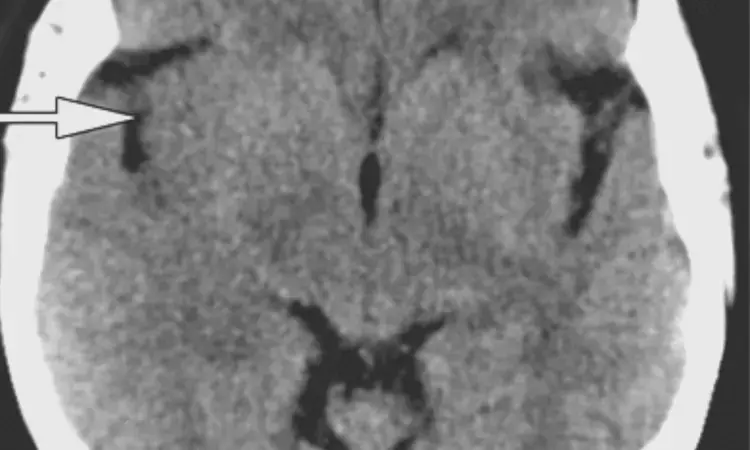- Home
- Medical news & Guidelines
- Anesthesiology
- Cardiology and CTVS
- Critical Care
- Dentistry
- Dermatology
- Diabetes and Endocrinology
- ENT
- Gastroenterology
- Medicine
- Nephrology
- Neurology
- Obstretics-Gynaecology
- Oncology
- Ophthalmology
- Orthopaedics
- Pediatrics-Neonatology
- Psychiatry
- Pulmonology
- Radiology
- Surgery
- Urology
- Laboratory Medicine
- Diet
- Nursing
- Paramedical
- Physiotherapy
- Health news
- Fact Check
- Bone Health Fact Check
- Brain Health Fact Check
- Cancer Related Fact Check
- Child Care Fact Check
- Dental and oral health fact check
- Diabetes and metabolic health fact check
- Diet and Nutrition Fact Check
- Eye and ENT Care Fact Check
- Fitness fact check
- Gut health fact check
- Heart health fact check
- Kidney health fact check
- Medical education fact check
- Men's health fact check
- Respiratory fact check
- Skin and hair care fact check
- Vaccine and Immunization fact check
- Women's health fact check
- AYUSH
- State News
- Andaman and Nicobar Islands
- Andhra Pradesh
- Arunachal Pradesh
- Assam
- Bihar
- Chandigarh
- Chattisgarh
- Dadra and Nagar Haveli
- Daman and Diu
- Delhi
- Goa
- Gujarat
- Haryana
- Himachal Pradesh
- Jammu & Kashmir
- Jharkhand
- Karnataka
- Kerala
- Ladakh
- Lakshadweep
- Madhya Pradesh
- Maharashtra
- Manipur
- Meghalaya
- Mizoram
- Nagaland
- Odisha
- Puducherry
- Punjab
- Rajasthan
- Sikkim
- Tamil Nadu
- Telangana
- Tripura
- Uttar Pradesh
- Uttrakhand
- West Bengal
- Medical Education
- Industry
Cardiac CT inclusion to acute stroke imaging bests echocardiography for cardioembolism detection

Netherlands: Cardiac computed tomography (CT) could be a promising alternative to transthoracic echocardiography (TTE) for cardioembolism screening, researchers state in a recent study published in the journal Neurology.
The study showed that acquiring cardiac CT in the initial hyperacute stroke imaging protocol is technically feasible and gives a superior diagnostic yield than TTE for detecting high-risk sources of embolism.
Echocardiography is recommended in patients with ischemic stroke to screen for structural sources of cardioembolism. Cardiac CT seemed a promising alternative as a first-line screening method. Leon A. Rinkel, University of Amsterdam, the Netherlands, and colleagues aimed to determine if cardiac CT when included in the initial stroke imaging protocol, gives a higher yield for detecting high-risk cardioaortic sources of embolism than transthoracic echocardiography.
For this purpose, the researchers performed a single-center, prospective, observational cohort study that included consecutive acute ischemic stroke patients who underwent ECG-gated cardiac CT during the initial stroke imaging protocol. Patients also underwent routine stroke workups, including TTE. The study's primary outcome was the percentage of patients with a predefined high-risk cardioaortic source of embolism on cardiac CT versus TTE in participants undergoing both investigations.
Seven hundred seventy-four patients with a suspected ischemic stroke underwent hyperacute cardiac CT between May 2018 and November 2020. Two hundred twenty-eight patients with a diagnosis other than ischemic stroke were excluded, along with 94 patients who did not give informed consent. Therefore, four hundred fifty-two patients (median age 72, 59.3% male) were included.
The study led to the following findings:
The median additional scan time of cardiac CT was 6 minutes, with poor scan quality at only 3%.
In total, 77.4% underwent TTE, 99 of whom were performed in an outpatient setting.
TTE being too burdensome to be conducted in the outpatient setting (69, 15.3%) and death (33, 7.3%) were the reasons for not undergoing TTE.
The researchers detected a high-risk cardioaortic source of embolism in 11.4% of patients on CT, compared with 4.9% of patients on TTE (odds ratio 5.60).
The most frequent finding (7.1% vs. 0.6%) was cardiac thrombus.
In the entire study population, the diagnostic yield of cardiac CT was 12.2%.
Among the 175 patients with cryptogenic stroke after the routine workup, cardiac CT identified a cause of the stroke in 6.3%.
'Earlier detection and higher yield of cardiac embolism were observed by incorporating cardiac CT into the regular CT imaging already carried out routinely in acute stroke patients," the researchers concluded.
Reference:
Rinkel LA, Guglielmi V, Beemsterboer CFP, Groeneveld NS, Lobé NHJ, Boekholdt SM, Bouma BJ, Muller FF, Beenen LFM, Marquering HA, Majoie CBLM, Roos YBWM, van Randen A, Planken RN, Coutinho JM. Diagnostic Yield of ECG-Gated Cardiac CT in theAcute Phase of Ischemic Stroke vsTransthoracic Echocardiography. Neurology. 2022 Oct 4;99(14):e1456-e1464. doi: 10.1212/WNL.0000000000200995. Epub 2022 Aug 2. PMID: 35918169.
Dr Kamal Kant Kohli-MBBS, DTCD- a chest specialist with more than 30 years of practice and a flair for writing clinical articles, Dr Kamal Kant Kohli joined Medical Dialogues as a Chief Editor of Medical News. Besides writing articles, as an editor, he proofreads and verifies all the medical content published on Medical Dialogues including those coming from journals, studies,medical conferences,guidelines etc. Email: drkohli@medicaldialogues.in. Contact no. 011-43720751


